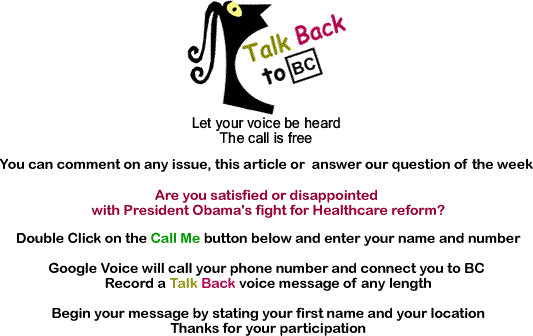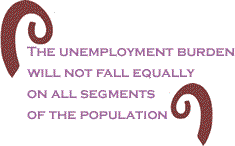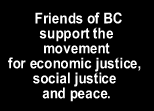
|
||||||||||||||||||||||

|
|

Custom Search
|
|
 |
|
Approaching
touchdown on an international flight on a U.S. air line a couple
of weeks ago, the cabin crew had a special announcement: “For
one of us this will be the last trip,” said the attendant. Luis is certainly not alone in his new status. Staff reductions in the travel tourism industry have been underway for some time, and since the start of capitalism’s latest crisis they have been drastic. Back in April, Air France unveiled plans to eliminate 2,500 jobs over the next two years by not replacing retiring workers and not renewing short-term contracts. Back in July, United Airlines, citing “this challenging economic environment” announced it had avoided layoffs when about 2,100 flight attendants agreed to take voluntary furlough or other steps. Then Continental Airlines announced a cut 1,700 jobs on top of a previous decision to lay off 500 reservations agents and 700 flight attendants. Last month, Japan Airlines Corp., said it was considering slashing 5,000 jobs over three years, or 10 percent of its workforce. In July British Airways announced it was considering cutting 2,000 attendants and 1,500 from its ground crew. I thought again about Luis the other day when the latest employment figures were released by the labor department. Which one was he? Does he have a family? A mortgage? How did he react to the applause? While the anticipated decrease in the number of jobs lost in the economy in August was cited as new evidence of a green shoot in the still dark economy terrain, the jump in the overall unemployment rate from 9.4 percent to 9.7 percent was unanticipated by the experts. Nearly seven million jobs have been lost since the recession began in December 2007. There are now about 14.9 million people in the country looking for work and over one third of them have been jobless for over 27 weeks. One alarming statistic emerges from the latest report. In August there were 758,000 women and men who once actively sought work but, for at least a month, have given up the search in futility. In November 2007, the number of such “discouraged workers,” was 349,000. The August figures mean that the nation is still on track to reach a 10 percent jobless rate by Christmas. And there are suggestions now that even that figure could be exceeded by year’s end. The Obama Administration has consistently made it clear that it expects the job situation to go on worsening. Labor Secretary Hilda Solis says that while she is pleased to see some “moderation” she told Fox Business News, that “we know that we are still going to continue to see some more job loss and we know it was predicted to go up.” One
thing that can always be anticipated when the jobs statistics
are released is the unemployment burden will not fall equally
on all segments of the population. According to the August Jobs Report from the Bureau of Labor Statistics:
“It’s a good picture compared to where we were, which was just a free fall,” says Dean Baker, a director of the Center for Economic and Policy Research, referring to the August numbers. “But compared to anything else, this is just a horrible report. The rate of decline is slowing, but it’s not going to stop. We’re likely on a path toward more than 10 percent unemployment.” “The
slower rate of job loss is the result of further moderation in
the pace of job loss in the sectors that have been the biggest
job losers,” says Baker. “These days, the people who buy and sell office buildings, shopping centers, warehouses, apartment buildings and hotels are hardly in a festive mood, despite some recent encouraging signs relating to the job and housing markets and a recent increase in sales of small office buildings,” reported the New York Times September 1. The article spoke of the market being in an early stage of a crisis that will see “a spate of defaults, foreclosures and bankruptcies that could surpass the devastating real estate crash of the early 1990s. “It has become commonplace to explain each dismal job report by saying that a resurgence in employment always lags general economic recovery," the New York Times said editorially last week. “But with the job market severely wounded, and with consumer spending expected to be weak for a very long time, it could easily take until 2014 for employment to recover. It's safe to say that five years or more of subpar job growth is not what most people have in mind when they think of a ‘lag’.” “Everybody
is looking around saying, ‘Where is a robust recovery going to
come from?’ and not finding it,” said Heidi Shierholz, an economist
at Economic Policy Institute. Where to from here? “American workers are ready to roll up their sleeves and get back to work,” President Obama said in a Labor Day address to the AFL-CIO. But it’s going to take a lot more than bare arms and his assurances that recovery is just around the corner to make this happen. The financial world may have stabilized a bit and the rate of job loss declined but the need for bold government action remains urgent. As Associated Press Business Writer Christopher Leonard put it last week, “job cuts in August were lower than they've been in recent months. But a deeper look at the data shows why it will take millions of new jobs to dig American workers out of this recession's deep pit. ” “There
are three parts to the woes of American workers - falling wages,
rising unemployment, and insecurity about the future,” wrote American
Prospect co-editor Robert Kuttner. “More robust policies could
improve all three. For starters, we need a second stimulus bill.
“The high unemployment rate has brought increased criticism of U.S. President Barack Obama’s economic strategy,” wrote one foreign wire service reporter last week. Ridiculous, you say. It may not be a widespread sentiment today, however, considering everything else the reactionaries have engaged in its efforts to destroy the Obama Presidency; that charge is just waiting to be trotted out. “The Obama administration is on the defensive on health care in part because it is promoting an ambiguous and ultimately feeble health reform bill, but partly because health insurance has become a lightning rod for larger economic fears,” writes Kuttner. “Voters are not yet convinced that this president is on their side in the battle for economic security. Major steps to improve job opportunities and wages would be a good place to redeem the popular good wishes that accompanied President Obama as he took office.” BlackCommentator.com Editorial Board member Carl Bloice is a writer in San Francisco, a member of the National Coordinating Committee of the Committees of Correspondence for Democracy and Socialism and formerly worked for a healthcare union. Click here to contact Mr. Bloice. |
|
 |
|
Any BlackCommentator.com article may be re-printed so long as it is re-printed in its entirety and full credit given to the author and www.BlackCommentator.com. If the re-print is on the Internet we additionally request a link back to the original piece on our Website. Your comments are always welcome. eMail re-print notice
If you send us an eMail message we may publish all or part of it, unless you tell us it is not for publication. You may also request that we withhold your name. Thank you very much for your readership. |
|
| |
|
| September10
, 2009 Issue 341 |
|
| Executive Editor: Bill Fletcher, Jr. |
| Managing Editor: Nancy Littlefield |
| Publisher: Peter Gamble |
| Est. April 5, 2002 |
Printer Friendly Version
in resizeable plain
text format or pdf
format. |
 |

|
| |
| |































 When
the current economic downturn began the jobless rate among African
Americans stood at 8.4 percent; it has risen to 15.1 percent.
The rate for Latino workers rose 0.7 percentage points in August
to 13 percent, compared with a 0.3 percentage point rise to 8.9
percent for white workers.
When
the current economic downturn began the jobless rate among African
Americans stood at 8.4 percent; it has risen to 15.1 percent.
The rate for Latino workers rose 0.7 percentage points in August
to 13 percent, compared with a 0.3 percentage point rise to 8.9
percent for white workers. “It’s
going to be a rocky recovery. We’re going to have elevated unemployment
for four years to come.”
“It’s
going to be a rocky recovery. We’re going to have elevated unemployment
for four years to come.” It
could begin with emergency federal aid to state and local governments
that are laying off workers and cutting services in a recession.
We also need policies to create more jobs and raise wages for
the long term.”
It
could begin with emergency federal aid to state and local governments
that are laying off workers and cutting services in a recession.
We also need policies to create more jobs and raise wages for
the long term.”









